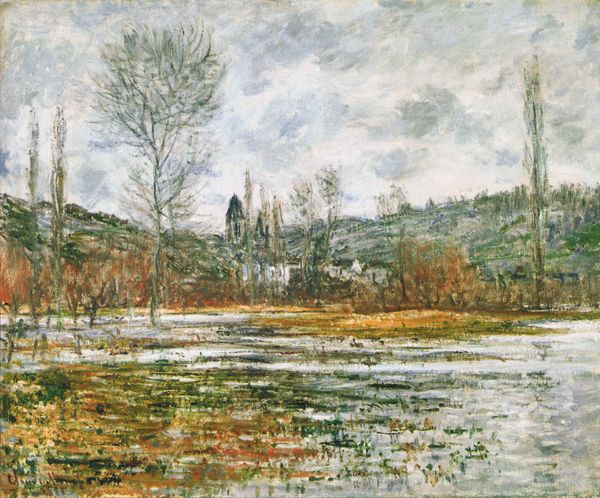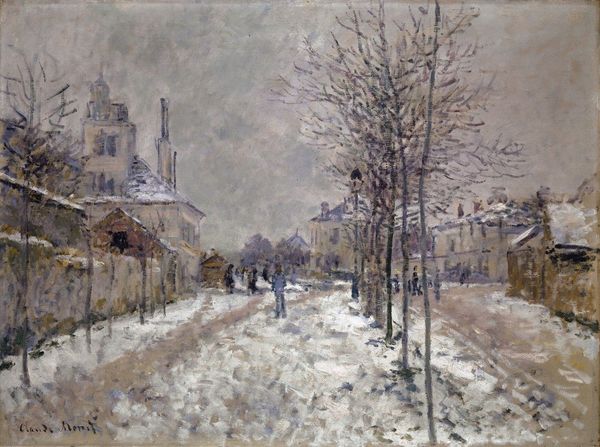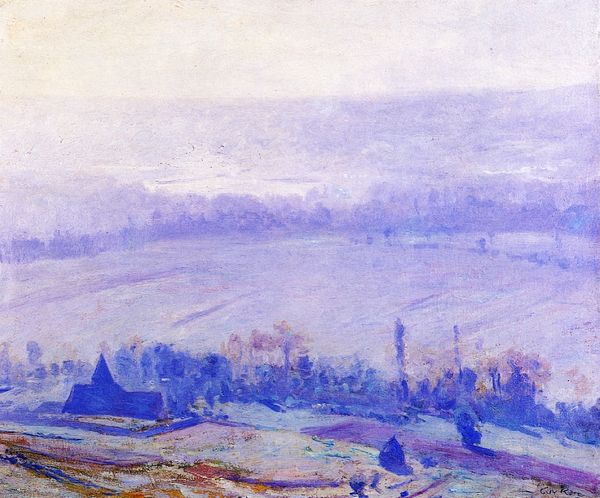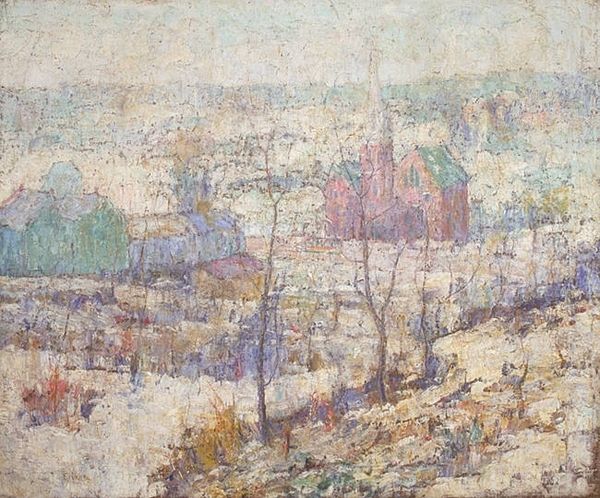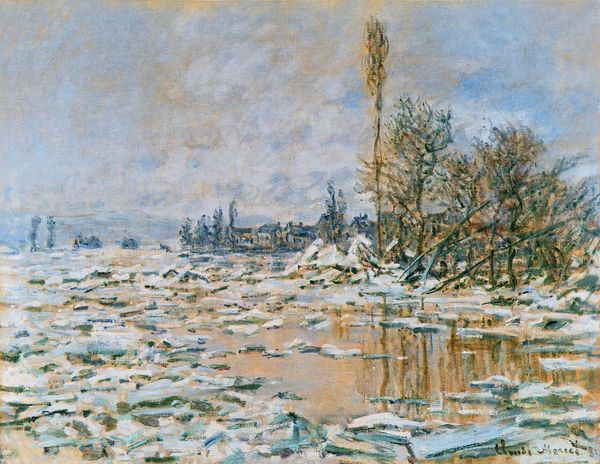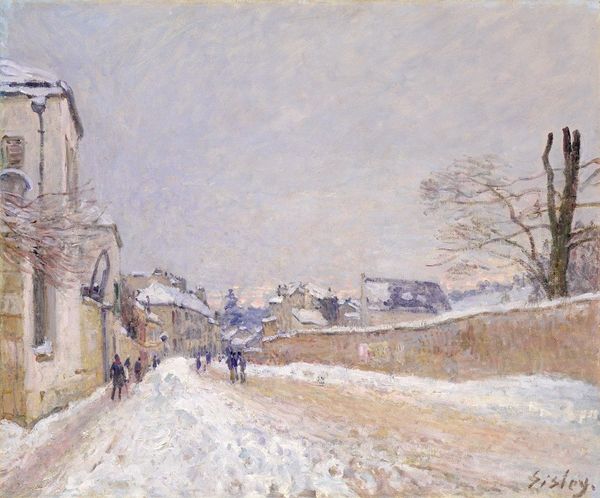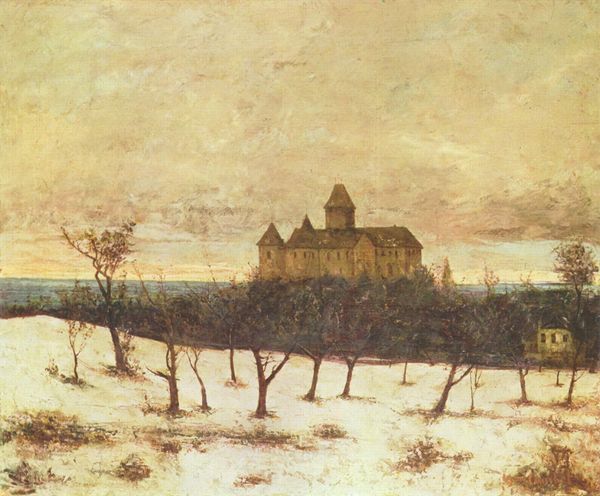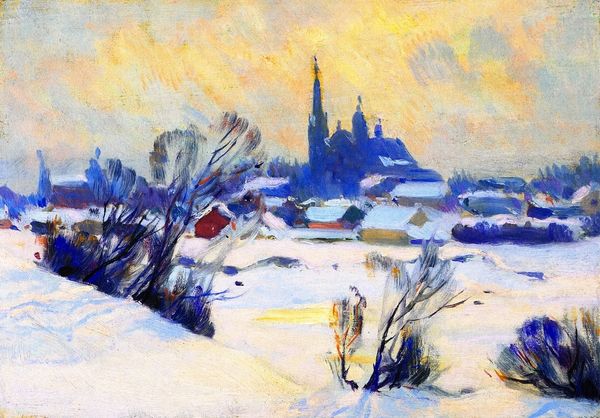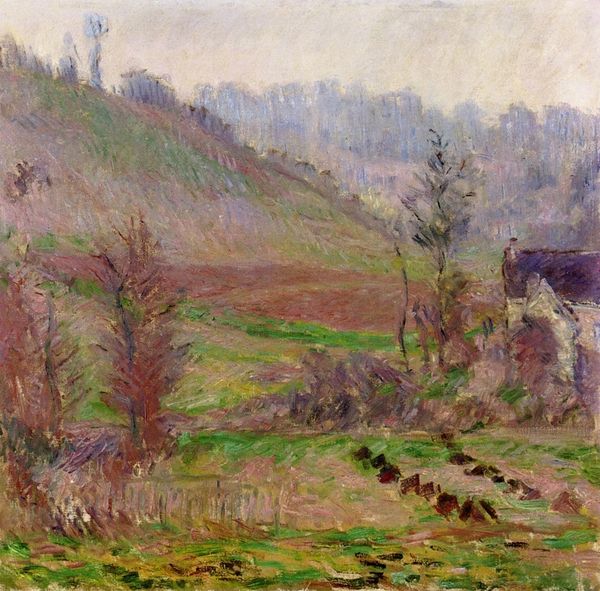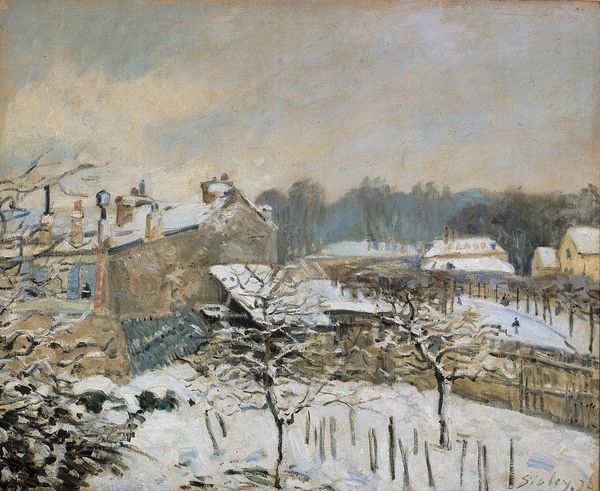
painting, plein-air, oil-paint
#
snow
#
painting
#
impressionism
#
impressionist painting style
#
plein-air
#
oil-paint
#
landscape
#
winter
#
impressionist landscape
#
oil painting
#
cityscape
#
post-impressionism
Copyright: Public domain
Claude Monet made this evocative landscape of Winter at Giverny with oil on canvas. Considered through a social lens, this painting can tell us about changing patterns of life in late nineteenth-century France, and the transformation of rural landscapes in the wake of industrialization. The village of Giverny, with its church spire, is shrouded in snow, but this is no longer the timeless rural idyll of earlier art. Monet, an innovator, painted en plein air, capturing fleeting moments of light and atmosphere, a radical move away from traditional studio painting. We can note how the landscape, with its subdued palette and broken brushstrokes, embodies the shifting perceptions of modernity. Monet settled in Giverny in 1883, taking advantage of new railway networks that allowed artists to escape Paris and seek out new subjects in the countryside. Art historians use sources, like letters and exhibition reviews, to understand the artist's intentions, as well as the cultural context. By studying the rise of Impressionism, we recognize how artists like Monet were challenging academic conventions and responding to the changing social conditions of their time.
Comments
No comments
Be the first to comment and join the conversation on the ultimate creative platform.
